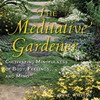A bluebird house is attached to one of the fence posts in the vegetable garden. No bluebirds have taken up residence there, but it's often the home of chickadees or wrens.
Yesterday i saw a surplus of nesting material pushing out of the easy-to-open front panel (so you can spy on baby birds). Since nesting season is over, and the summer birds have flown south, i flipped open the front wall and raked out the grapefruit-sized nest.
Out fell a mother mouse with 7 suckling teenage mice. She landed on a leaf and lay there for a minute looking extremely weary and perhaps stunned by the sudden eviction from her comfy home.
Then she dragged herself and her 7 cute, gray attachments off to hide under other nearby leaves.
Attachment, sometimes called craving, is the source of our on-going sense of unease with ourselves, our friends, and our world.
How does attachment feel?
Attachment to material possessions yields a sense of "mine." Mine, and you can't have it.
Attachment to people is an important developmental stage for babies (and baby mice too!)
As adults, attachment masquerades as love. Yet would love really be dissatisfied when the object of its affection is absent or distant or choosing her or his own path? Would love be disappointed? How could love be heart-broken? Love, by definition, is heart-open. How could love hurt?
Attachment suffers, but love does not.
Still, we drag our attachments around with us like the mother mouse dragging her 7 nearly full-grown children. Like her, we are worn out and panting from our burden of attachment, but how can we lay it down?
Saturday, October 1, 2011
Subscribe to:
Post Comments (Atom)




















No comments:
Post a Comment